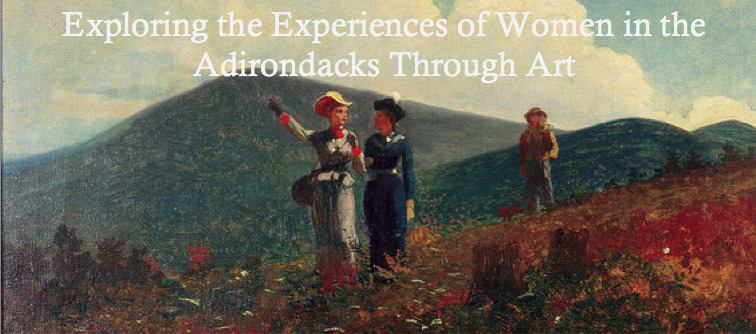
In our readings this past semster, hardly any of them made mention of women's experiences in the Adirondacks. As such, we were not sure what to expect when conducting research for this project. However, we did expect to find many scenes involving domestic life, which we certainly did in the Adirondack Museum's collection. The multitude of paintings that depicted local women in rustic homestead settings involved with some form of cooking indicated that women in the Adirondacks in many ways fufilled the very traditional role of domesticity. In this sense, the local women of the Adirondacks had a similar experience to other women in America living during the same period, although life in the Adirondacks was distinctly characterized by the "tough" nature of life. There was a strong sense of gender roles in the paintings within this thematic genre. The men were usually depicted as hunters and the providers, while the women played a more secondary, preparatory role. The meaning behind these illustrations was enhanced by the firsthand accounts of homestead life in the 1800's that we found. The combination of paintings and narratives was powerful, and we learned a great deal from both forms of primary sources.
While we had expected to find domestic scenes, we were pleasantly suprised to find such a great number of prints and paintings depicting women fishing, hunting, and hiking. From our perspective, these paintings and prints are truly unique to the Adirondacks. While many of the scenes feature men either in the foreground or the background, the few paintings that are soley of women interacting with nature are extremely significant in our own understanding of the Adirondacks. Looking at and reading about the independence and audacity of these trailblazing women was an eye-opening experience and completed our understanding of the early history of the Adirondacks. After completing this project, we feel that we have uncovered a bit of the hidden history of the Adirondacks, which although it does not receive much attention, is nevertheless significant in our understanding of the region and all of the people who once inhabited it.
